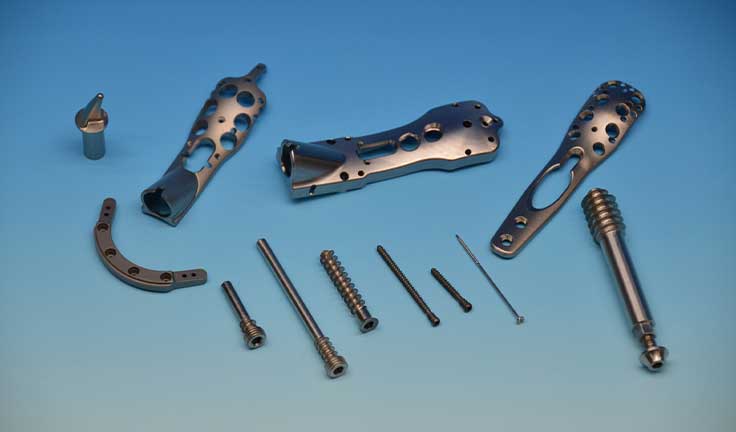Different Classes of Medical Devices Explained

Medical devices are subject to numerous industry and federally mandated regulations, as they’re critical to patient health and medical professionals’ abilities to provide quality care. U.S. manufacturers must follow certain requirements in creating and selling medical devices to ensure that they’re safe to diagnose, treat, or cure patients and receive device classification. Read on to learn more about medical device classification, the three specific classes, and how partnering with an experienced medical device manufacturer can help you navigate the complex compliance landscape surrounding these products.
Importance of Medical Device Classification
Medical devices are categorized into different classes based on the nature of the device, its intended application, and the risks associated with it. The United States Food and Drug Administration (FDA) manages the regulation process, establishing strict criteria to determine whether a product should be classified as a Class I, Class II, or Class III medical device.
It’s important to understand your product’s classification from the beginning, at the development and design stages. This allows you to put design controls in place to ensure your product will meet the intended classification standards for FDA clearance or approval. Medical device classifications also establish the specific steps required in your go-to-market strategy, giving you a better idea of the review process as well as the timeline and costs you can expect for your project.
Classes of Medical Devices
The FDA’s Center for Devices and Radiological Health (CDRH) is committed to supporting and safeguarding public health in the U.S. Part of this responsibility involves analyzing the potential safety risks that different medical devices pose to users and patients. The branch has established three distinct classes of medical devices, ranging from relatively low-risk devices in Class I to more complex and potentially harmful devices in Class III. Each class carries its own set of criteria for FDA categorization.
What Are Class I Medical Devices?
Class I medical devices pose only a low or moderate risk to the healthcare professionals and patients who rely on them. Approximately 47% of medical devices available on the market are considered Class I devices, and of those, all but 5% are exempt from the FDA’s regulatory procedures. Manufacturers that make Class I medical devices must list the device with the FDA and register their business. However, with exempt products in this generic category, U.S. regulations don’t require manufacturers to generate a premarket notification application or receive clearance from the FDA prior to product marketing. Common examples of Class I equipment include:
- Bandages
- Electric toothbrushes
- Hospital beds
- Non-electric wheelchairs
- Oxygen masks
- Reusable surgical scalpels
- Tongue depressors
What Are Class II Medical Devices?
Class II medical devices pose a higher risk to users. These products are often more complex and will have more prolonged contact with patients, increasing the risk of misuse or contact issues. Approximately 43% of FDA-regulated medical devices are Class II, with many of them having diagnostic or internal applications. Examples of products that fall under the Class II medical device requirements include the following:
- Absorbable sutures
- Blood pressure cuffs
- Blood transfusion kits
- Catheters
- Contact lenses
- Pregnancy test kits
- Surgical gloves
- Syringes
What Are Class III Medical Devices?
What is a Class III medical device? The FDA classifies a device as Class III if it’s integral to patient health and keeping them alive. Approximately 10% of all medical devices the FDA regulates are Class III products. While many patients rely on these devices for continued care, they present serious risks as they’re often implantable and they could potentially result in injury or an increased illness risk if they malfunction or are improperly used. Class III medical device examples include:
- Breast implants
- Cochlear implants
- Deep-brain stimulators
- Defibrillators
- Fetal blood sampling monitors
- High-frequency ventilators
- Pacemakers
- Prosthetic implants
Contact Unity Precision for Your Medical Device Manufacturing Needs
Med Class I, Class II, and Class III devices all require stringent adherence to FDA requirements to proceed to market. Choosing to work with a qualified contract manufacturer experienced in medical devices can help you achieve optimal results.
For more than 50 years, U.S.-owned Unity Precision Manufacturing has served the medical industry with trusted precision contract manufacturing in compliance with FDA requirements. Our talented team will draw on our extensive expertise to produce your Class I, II, or III medical and surgical instruments, devices, and implants per your specifications and those of their intended class.
Our efficient, validated manufacturing techniques allow us to make high-quality, competitively priced goods in-house for quick turnaround. For medtech projects simple or complex, we’ll provide end-to-end production and project management services from design for manufacturing (DFM) and prototyping to manufacturing and assembly. We can also assist with tolerance inspections, packaging, and inventory management for turnkey, full-service solutions.
Contact us today to learn more about the Unity difference and how we can support your medical manufacturing project.